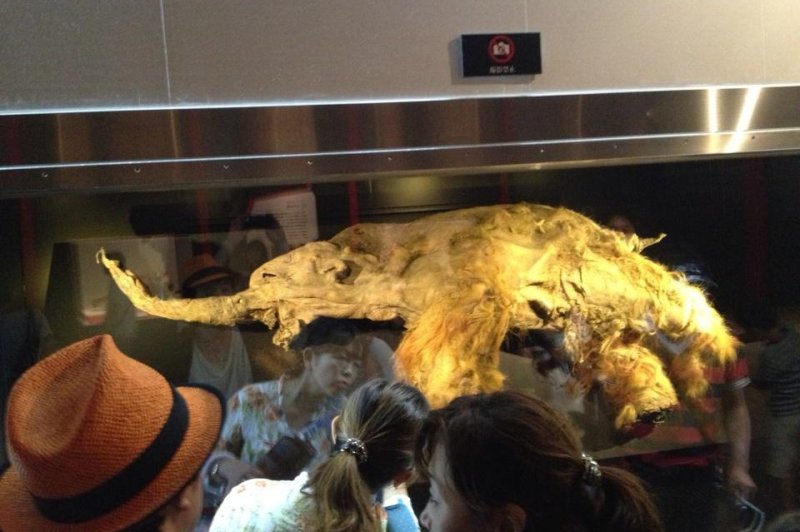MOSCOW, Oct. 29 (UPI) -- The incredibly well-preserved carcass of a baby woolly mammoth recently went on display in Moscow as part of an event for the Russian Geological Society, and it is already drawing crowds. The carcass was found in the far north of Russia, among the snow and ice of the region known as Yakutia -- one of the coldest continually inhabited places on Earth.
Researchers estimate the mammoth's age at somewhere between 38,000 and 40,000 years old. They say the juvenile mammoth likely died between the ages of six and nine. After a brief tour through Japan and Taiwan, the baby mammoth is now featured in an exhibit at the Russian Geographic Union.















